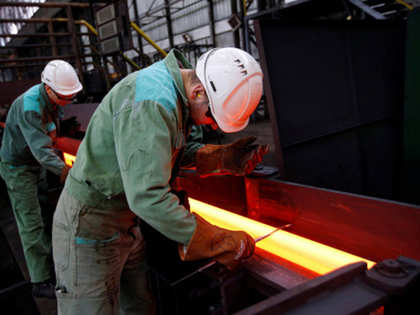 Reuters
ReutersIn behavioural economics, the concept of ‘nudge’ states that people or institutions can be helped to think appropriately and make better decisions by being offered choices that have been designed to enable win-win outcomes. Under PLI, incentives shall be payable to eligible companies for incremental production of specialty steel on a year-on-year basis, for a period of five years.
Effectively, GoI is encouraging them to add value to products. This will have a dual advantage — not only will this amount to getting better prices for value-added products in domestic and international markets, but it will also get incentives under the scheme. Both integrated steel producers and secondary steel producers as well as MSMEs will benefit.
An outlay of Rs 6,322 crore has been planned to boost domestic steel manufacturing of ‘specialty steel’ and attract significant investments. ‘specialty steel’ grades that need to be incentivised were finalised in consultation with the producers and the user industries. ‘specialty steel’ is one of the 13 critical sectors identified for bolstering India’s manufacturing capabilities and enhancing exports, for which PLI schemes have been approved.
These incentives are aimed at driving India’s growth by giving better value to consumers, and bringing in high import substitution. Also, the expected additional investments under the scheme have the potential to not only meet the domestic demand but also create global champions. PLI will help to achieve GoI’s vision of Aatmanirbhar Bharat in high-grade steel production, besides achieving technological capabilities and creating a competitive and technically advanced ecosystem. It will lead to domestic capacity addition in ‘specialty steel’ with an investment of about Rs 40,000 crore, substantial reduction in imports from about Rs 30,000 crore today, and enhance exports to the tune of Rs 33,000 crore.
With the potential for creating additional manufacturing capacities of around 25 million tonnes, it is estimated that the PLI scheme has an employment generation potential of about 525,000, of which about 68,000 will be direct employment.
The ‘specialty steel’ segment was chosen because the steel industry operates at a lower end of the value chain when it comes to the steel trade. In 2020-21, India’s steel export was 10.7 million tonnes, of which 1.8 million tonnes were of ‘specialty steel’, while imports were 4.7 million tonnes, of which 2.9 million tonnes were of ‘specialty steel’. This imbalance of high imports and low exports as a percentage of total trade can be reversed by the PLI scheme.
The National Steel Policy (NSP) 2017 has set a target of domestic production meeting the entire demand of high-grade automotive steel, electrical steel, special steel and alloys for strategic applications by 2030-31. India can achieve this only if GoI incentivises the steel industry to enhance the production of such ‘specialty steel’ grades and move up the value chain. This ‘nudge’ will help India leapfrog to be in the league of countries producing high-quality value-added steel.










 Get Unlimited Access to The Economic Times
Get Unlimited Access to The Economic Times
